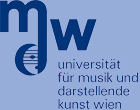Special topic: Optical imaging for musical acoustics (T. Rossing): Description

Optical imaging methods have recently got specific attention in musical acoustics. Papers on
methods and their practical application are welcome here!

hide abstractsMoore; Thomas:
(Invited) / O | 'VISUALIZING STRUCTURAL VIBRATIONS USING LASER SPECKLE' | |
| Scientists have been seeking new ways of imaging small vibrations since Chladni first placed sand on a vibrating plate in the 18th century. For the 200 years following Chladniís discovery there were few other methods available for imaging vibrations; however, in the latter half of the 20th century the invention of the laser spurred the development of several different methods to optically image sub-micrometer vibrations. Of the optical methods available today for visualizing vibrations, the broad class of imaging techniques that rely on the phenomenon of laser speckle has become particularly useful. An overview of some of these speckle imaging techniques will be presented, with an emphasis on visualizing the vibrations of musical instruments. Several examples will be discussed, and ideas for the inexpensive construction of the necessary apparatusí will be reviewed. |
Richardson; Bernard:
(Invited) / O | 'MODE STUDIES OF PLUCKED STRINGED INSTRUMENTS: APPLICATION OF HOLOGRAPHIC INTERFEROMETRY' | |
The acoustics group at Cardiff have used holographic interferometry for many years to study the vibrations of musical instruments. After a brief review of the technique and equipment and the particular strengths and weaknesses of this analysis tool, the paper will describe measurements on historic, modern and experimental guitars and related instruments. These studies highlight the effects of strutting and bracing patterns used on the underside of the soundboard and the size and positioning of the bridge, which give insight how the design and construction of these instruments affects their mechanical vibrational properties and their acoustical function.
Whilst there will be some technical elements in this paper, the intention is to assist the maker in interpreting these intriguing images and using them to make informed decisions about modifications in the designs of musical instruments. |
Rossing; Thomas:
(Invited) / O | 'SOME OPTICAL METHODS FOR MODAL ANALYSIS OF MUSICAL INSTRUMENTS' | |
| Because of their high spatial resolution, optical methods have become important for modal analysis of vibrations in musical instruments. Among optical methods for modal analysis are time-average holographic interferometry, pulsed TV holography, digital speckle interferometry, and scanning vibrometry. We review briefly principles and applications of optical methods for modal analysis. |
| Amir; Noam: / P | 'IMPROVEMENTS ON THE USE OF MAXIMUM LENGTH SEQUENCES IN ACOUSTIC PULSE REFLECTOMETRY' | |
| Acoustic Pulse Reflectometry (APR) is a common method used to measure the impulse response of a system, such as a room, tube, or musical wind instrument. Classically, it is based on the generation of one or many acoustic pulses and measuring the reflections generated in the object. Today, APR encompasses the use of more complex excitation signals, the most common of them being either a swept-sine or a Maximum Length Sequence (MLS). Both methods have been found to excite nonlinearities in the instrumentation system, most often in the loudspeaker. When using MLS, these nonlinearities crop up as spurious, artifactual peaks in the impulse response. In this paper we describe an improved MLS signal, termed here WMLS. This signal is obtained through a specific form of lengthening the original MLS signal using a tunable parameter. The net result is an impulse response with greatly reduced non-linear artifacts. Correct selection of the WMLS signal can bring the artifacts down to the level of the background noise, effectively eliminating them altogether. We present a comparison of measurements using both standard MLS and WMLS excitations, demonstrating the feasibility of WMLS and the improvement in the resulting signal to noise ratios. |
| Morrison; Andrew: / O | 'CHARACTERIZATION OF COUPLED VIBRATIONS IN THE CARIBBEAN STEEL PAN' | |
| The Caribbean steel pan is one of the most recently developed tuned percussion instruments and has been the subject of much scientific study in recent years. The steel pan is a unique instrument due to its arrangement of notes in a single steel membrane. The skilled tuner will usually attempt to give most notes three harmonically related partials through a process of careful hammering. Deformations of one note area inevitably change the resonant frequencies of the other notes, therefore the tuner must iteratively cycle through the notes until all are tuned. Although the resonances of the individual notes and the resonances of the skirt have been thoroughly studied, the coupling between vibrations of notes in the drum has not been studied as deeply. Movies of note strikes of a low tenor (also called a soprano) steel pan were acquired using an electronic speckle pattern interferometer equipped with a high speed camera. Movies showing the propagation of waves from the strike point and the evolution of coupling between note areas will be shown. |
| Otcenasek; Zdenek: | 'POSSIBILITY OF ESPI VISUALIZATION ' | |
| Electronic speckle pattern interferometers (ESPI) are prominent helping tools for non contact observations of movements of an object surface. Their functionality is based on speckles, which are products of the interference effect between both the laser beams scattered from separate unevenness of the object rough surface and the reference beam originated from the same laser source. This method is applicable on rough surfaces of solids. In the case of acoustic fields the air particles donít give speckle patterns. Also in this case ESPI visualization can be used, but based on a principle of changes in the air refractive index when air pressure is changed. The aim of this contribution is to explain basic know-how and possibilities of ESPI (especially double pulse TV ESPI method) visualizations of a sound pressure distribution in a defined space. The practical output is focused on applications on wind musical instruments (presented is an example of sound pressure distribution inside and outside of an organ pipe in the process of normal excitation). |








